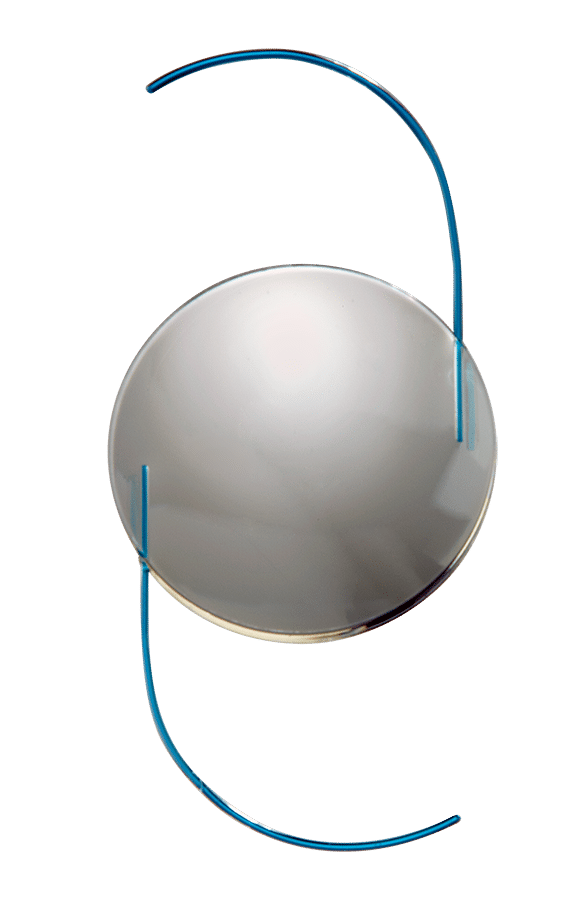Cataract Surgery

The word cataract comes from Latin and Greek words for “waterfall” and “to wash down”, respectively. This is possibly because vision with cataracts is often described as if one is looking through a waterfall. As the eye ages, the area of the crystalline lens develops cloudy protein deposits that interfere with sight in varying degrees. Cataracts usually progress slowly and vision loss gradually worsens with time if left untreated.
What are the symptoms?
Some of the symptoms that cataracts are progressing include: blurred vision, decreased night vision, halos around bright lights, trouble with night vision, difficulty with depth perception, and difficulty reading. The development of cataracts is sometimes unavoidable as it can be caused simply by age, or hereditary conditions, but it can also be caused by eye trauma, diabetes, long term use of some medications like oral steroids, ultraviolet radiation, and smoking.
If you are experiencing any of the symptoms mentioned above, contact MidWest Eye Center to schedule an appointment at (800) 385-EYES (3937).
Who is at risk?
As you age past 60, you will more than likely develop cataracts. More than 50 percent of people do, and some develop them even younger than that. It is quite normal and very treatable with corrective surgery in one or both eyes, depending on where the cataracts develop.
How are cataracts diagnosed?
If you are experiencing some of the symptoms of a cataract, you should visit your eye doctor so he or she can perform a contrast sensitivity test. This will determine the degree to which the cataract is affecting your vision and will determine how soon you should treat your cataract.
How are cataracts treated?
Once a cataract starts altering your vision enough to affect everyday activities, it is probably time to treat it since it will only get worse. Currently the only medical treatment for cataracts is to have them surgically removed.
Surgically removing a cataract is usually done on an outpatient basis and involves making an incision into the capsule of the cataractous lens to remove the lens. A topical or local anesthetic will be applied, as well as dilating eye drops and/or a sedative, to make the operation painless. The doctor will choose to physically remove the cloudy lens, or to break it up using high frequency sound waves, and then extract the lens particles using suction. In either case, the lens is replaced with a flexible plastic lens that will remain permanently. These replacement lenses can be adjusted to correct other previous vision deficiencies as well. Cataract surgery incisions are usually self-sealing and do not require sutures. When stitches are occasionally required for healing, they can be easily and painlessly removed in the office.
Take Our Cataract Self-Test
Find out if you are a good candidate for cataract surgery.
Procedures
Advanced Cataract Replacement
Surgically removing a cataract is usually done on an outpatient basis and involves making an incision into the capsule of the cataractous lens to remove the lens. A topical or local anesthetic will be applied, as well as dilating eye drops and/or a sedative, to make the operation painless. The doctor will choose to physically remove the cloudy lens, or to break it up using high frequency sound waves, and then extract the lens particles using suction. In either case, the lens is replaced with a flexible plastic lens that will remain permanently. These replacement lenses can be adjusted to correct other previous vision deficiencies as well.
Cataract surgery incisions are usually self-sealing and do not require sutures. When stitches are occasionally required for healing, they can be easily and painlessly removed in the office.
Femtosecond Laser-Assisted Cataract Surgery (FLACS)
Femtosecond laser-assisted cataract surgery uses a Catalyst femtosecond laser to remove the natural lens and replace it with an artificial lens, called an intraocular lens or IOL. During laser-assisted cataract surgery, the Catalyst femtosecond laser is used in several ways, including creating an incision in the cornea, opening the cataract membrane, and softening the cataract before gently removing it.
Using a femtosecond laser is more accurate, safer, and leads to better visual outcomes for patients than traditional cataract surgery methods requiring a blade to remove a cataract. Femtosecond laser-assisted cataract surgery is also preferred when placing premium intraocular lenses, as FLACS can reduce the likelihood of an IOL shifting during insertion.
Choosing an IOL to replace your natural lens can be a challenging decision. At MidWest Eye Center, our cataract surgeons are proud to offer patients various lens options to align with their unique budgets and vision goals.

Introducing the Revolutionary Light Adjustable Lens
Choose the first and only customizable lens after cataract surgery.
Monofocal
Monofocal IOLs are standard lenses that offer vision correction at one range of distance. Although your eye doctor can set your monofocal IOL to correct your vision at near, far, or intermediate distances, most people choose to have their vision corrected at a distance.
In this instance, they will need to wear glasses for other near activities, such as reading or working on the computer but will be able to see clearly at a distance without visual aids. For this reason, monofocal lenses may not be ideal for those who desire greater freedom from visual aids.
However, since monofocal lenses are typically covered by insurance, they are a great option if you have a tight budget or want your cataract surgery to be as inexpensive as possible. Although these lenses will only correct your vision at a single distance, replacing your natural lens where your cataract is with a new clear lens will eliminate cataract symptoms like glare and halos.
The monofocal IOLs offered at MidWest Eye Center are:
- Tecnis Monofocal
- Clareon Monofocal
- Modified Monofocal Intraocular Lenses
- Tecnis Eyhance
- RayOne EMV
Multifocal
Multifocal IOLs are advanced artificial lenses that can allow you to reduce your dependence on visual aids like glasses and contact lenses. Multifocal IOLs correct your vision at multiple distances instead of just a single distance like monofocals.
Concentric rings etched onto the surface of the multifocal lens enable the retina to concentrate on images at various distances. This means if you choose a multifocal IOL, you will be able to experience clear vision at a distance, near, and intermediate range.
There are many different types of multifocal lenses. Although they are often more expensive than monofocal lenses and may require an out-of-pocket payment, there are many benefits to choosing a multifocal IOL.
One of the most significant reasons to choose a multifocal IOL is for the visual freedom they provide. If you are interested in a life with reduced dependency on visual aids, speak with your eye doctor at MidWest Eye Center in Cincinnati, Ohio, about your options.
The multifocal IOLs offered at MidWest Eye Center are:
- Bifocal
- Tecnis Multifocal
- Trifocal
- Clareon Panoptix
- Tecnis Synergy
Toric
If you have astigmatism, your eye doctor may recommend that you choose a toric IOL prior to cataract surgery. A toric IOL is designed to correct astigmatism, allowing you to experience ultimate visual clarity.
Toric IOLs are premium, advanced lenses. For this reason, they may cost more than a monofocal IOL.
However, if you have a significant amount of astigmatism, a toric IOL may be necessary to provide you with the most optimal vision results.
The toric IOLs offered at MidWest Eye Center are:
- Tecnis Eyhance Toric
Extended Depth of Focus
An extended depth of focus IOL, also known as EDOF, is an advanced IOL that utilizes unique technology. EDOF lenses improve depth of focus by producing a single, extended focal point as opposed to several foci as multifocal IOLs do.
Because of its unique technology, those who choose an EDOF lens are able to experience improved vision and reduced visual disturbances such as glare and halos. EDOF lenses can provide excellent distance and intermediate vision.
Since these lenses are designed to offer high-quality broad-range vision, you will be able to experience more continuous vision with fewer gaps. EDOF lenses also offer improved visibility in low-lighting conditions.
The extended depth of focus IOLs offered at MidWest Eye Center are:
• Clareon Vivity
• Tecnis Symfony Optiblue
Are you interested in learning which IOL option may be best for you? Schedule an appointment at MidWest Eye Center in Cincinnati, OH, today!









